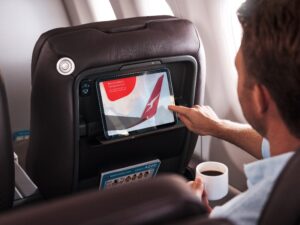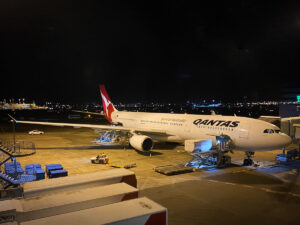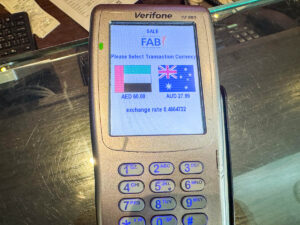
eSIMs, the digital counterpart to traditional SIM cards, are becoming a staple in modern smartphones. The technology is especially beneficial for travellers as international eSIM data plans have become cost-effective and dependable.
eSIMs are a cheaper alternative to global roaming. And if you’re only travelling overseas for a short time – or going to different countries – they’re much more convenient than buying a physical SIM at your destination and swapping it into your phone’s SIM card slot.
What is an eSIM?
An eSIM – short for “embedded SIM” – is a digital version of the physical SIM card. It works exactly the same as a regular SIM card, but instead of inserting it, the eSIM can be downloaded directly to your phone.
With an eSIM, you can set up a new mobile or data plan directly on your device from anywhere in the world. This instant activation process, which can be done before you leave, greatly simplifies the travelling experience.
There are many current providers of eSIMs tailored to travel, such as Airalo, Nomad and Flexiroam.
Why you should get an eSIM
Flexibility
eSIMs are downloadable, and work with an existing SIM card. This works especially well for those who are expecting an important call to their usual number, as you can have both your usual SIM and eSIM active at the same time.
eSIM providers often have various plans that are tailored to different types of travellers with different lengths, data caps and country coverage.
With Airalo, for example, you can choose a plan for a specific country, a region or even a global plan covering every country where Airalo operates. Prices start from around USD4.50 (~AU$7) for 1GB of data lasting 7 days, depending on the country, with better pricing for larger plans.

If you would traditionally use a portable WiFi device, an eSIM could be better suited as well. Your phone can act as a personal hotspot, providing you with constant connectivity for all your devices.
While this does mean you are dependent on your phone battery, many travellers carry a portable charging device to extend their phone’s battery life.
Cost savings
Traditional international roaming charges can be sky-high, even with the day passes offered by major Australian telcos. Likewise, the process of buying a local SIM card in a new country can be both time-consuming and difficult.
Below is a comparison of international roaming passes offered by Telstra and Optus, and eSIM providers Airalo and Nomad. The prices are based on a 30-day trip to the United Kingdom, choosing the highest available data limit:
| Provider | Cost | Data | Calls | Texts |
|---|---|---|---|---|
| Telstra | $300 | 30GB (1GB per day) | Unlimited | Unlimited |
| Optus | $150 | 150GB (5GB per day) | Unlimited | Unlimited |
| Airalo | USD36 (~AU$55) | 20GB | Not included | Not included |
| Nomad | USD30 (~AU$46) | 20GB | Not included | Not included |
While Airalo, Nomad and other providers offer data only, you will still be able to receive calls and texts to your Australian phone number. You are also able to use Voice over Internet Protocol (VoIP) services such as WhatsApp with only data, and you can still make phone calls over data using a service like Skype.
In most cases, an eSIM works out to be a lot cheaper. The only exception would be if you’re an extremely heavy data user. But most travellers would only need to use a relatively small amounts of data while out and about, as you can get free WiFi in hotels, airports and many other places.
How to get an eSIM
You will first need to ensure your phone is eSIM-compatible. The Airalo website has a list of compatible devices. Then, choose an eSIM provider and plan, purchase it, and set up an account.
If purchasing an eSIM, you may wish to consider paying with a card without foreign transaction fees, as most providers are based outside Australia.
Install the eSIM following the provider’s instructions, typically by scanning a QR code. Activate the it using the provider’s app and set your phone’s cellular settings to define the eSIM’s use.
Once activated, you can use your phone as usual. Regularly monitor your data usage via the provider’s app to make the most of your plan.
Conclusion
eSIM technology significantly simplifies the traveling experience by eliminating the need for physical SIM card changes, allows for flexibility depending on your travel patterns, and is generally cheaper. They’re here to stay, and are already a valuable tool in a traveller’s repertoire.
















































































Community Comments
Loading new replies...
Join the full discussion at the Australian Frequent Flyer →